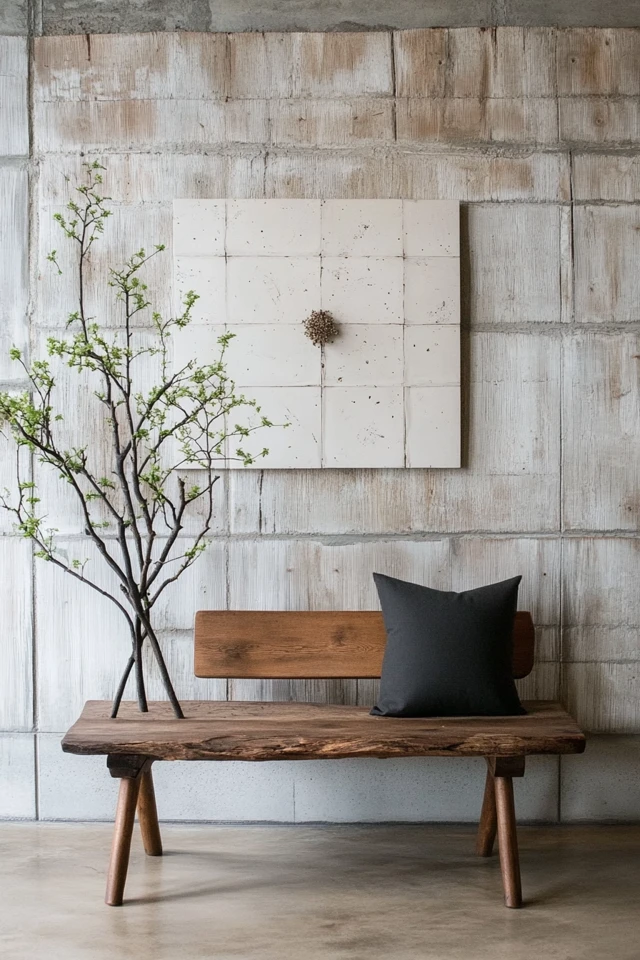Wall art is an essential component of any interior design, even in minimalist spaces where simplicity reigns. Minimalist wall art adds character and personality without overwhelming the clean and uncluttered aesthetic. It’s about using subtle, intentional pieces to enhance your space while keeping it balanced and cohesive.
When I first transitioned to a minimalist home, finding the right wall art was challenging. I didn’t want to disrupt the serenity I’d worked so hard to create, but I also didn’t want my walls to feel bare. Through trial and error, I discovered that minimalist wall art is all about thoughtful curation—choosing pieces that elevate the room while blending seamlessly into its design.
In this guide, I’ll share 10 creative ideas for minimalist wall art that will add beauty and sophistication to your space without breaking its serene vibe.
Why Minimalist Wall Art Matters
Benefits of Minimalist Wall Art
- Enhances Space: Adds depth and personality without clutter.
- Creates Focal Points: Draws attention to specific areas in a subtle way.
- Maintains Simplicity: Uses clean lines, neutral tones, and balanced compositions to stay true to minimalist principles.
1. Large-Scale Abstract Prints
Why It Works
A single, large abstract piece makes a bold yet understated statement in minimalist interiors.
How to Style It
- Opt for neutral tones or monochromatic designs with clean lines and soft shapes.
- Hang it above a sofa, bed, or dining table for a dramatic focal point.
- Use a thin black or white frame for a sleek finish.
Example:
A black-and-white abstract print with sweeping brushstrokes adds visual interest to a minimalist living room.
2. Simple Line Drawings
Why It Works
Line drawings are elegant and versatile, capturing the essence of minimalism with their simplicity.
How to Style It
- Choose line art with soft curves or geometric designs.
- Display them as a single piece or in a small, evenly spaced gallery wall.
- Stick to neutral frames or go frameless for a modern touch.
Example:
A set of three minimalist line drawings of faces creates a cohesive and artistic vibe in a bedroom.
3. Monochromatic Photography
Why It Works
Black-and-white photography offers timeless elegance and fits seamlessly into minimalist interiors.
How to Style It
- Choose photos of architectural elements, nature, or abstract textures.
- Use large mats and thin frames to create clean, gallery-style displays.
- Hang a single piece for a dramatic effect or create a symmetrical gallery wall.
Example:
A black-and-white photograph of a misty forest brings a serene, natural element to a minimalist dining area.
Picture Gallery
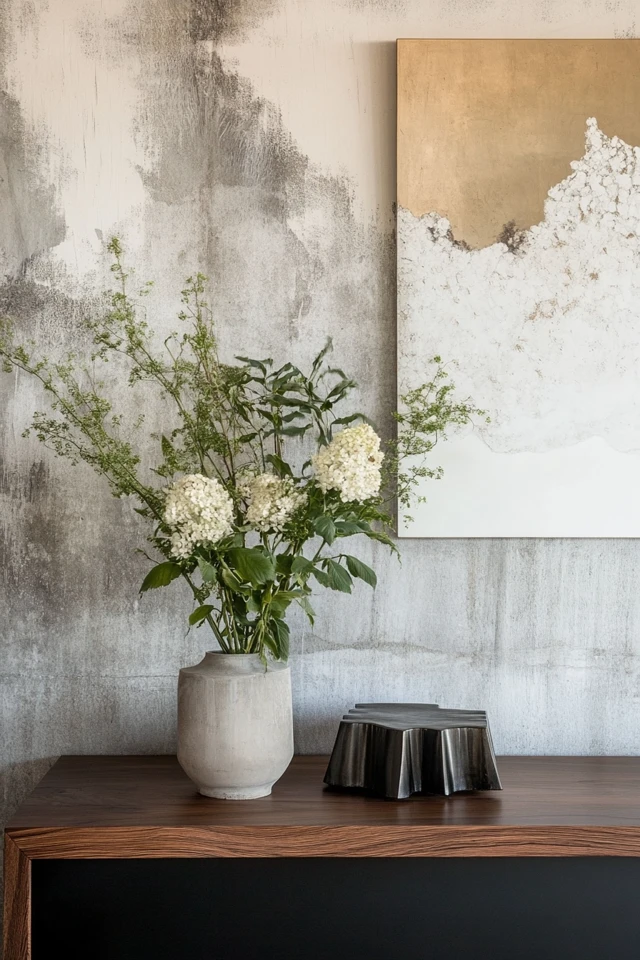

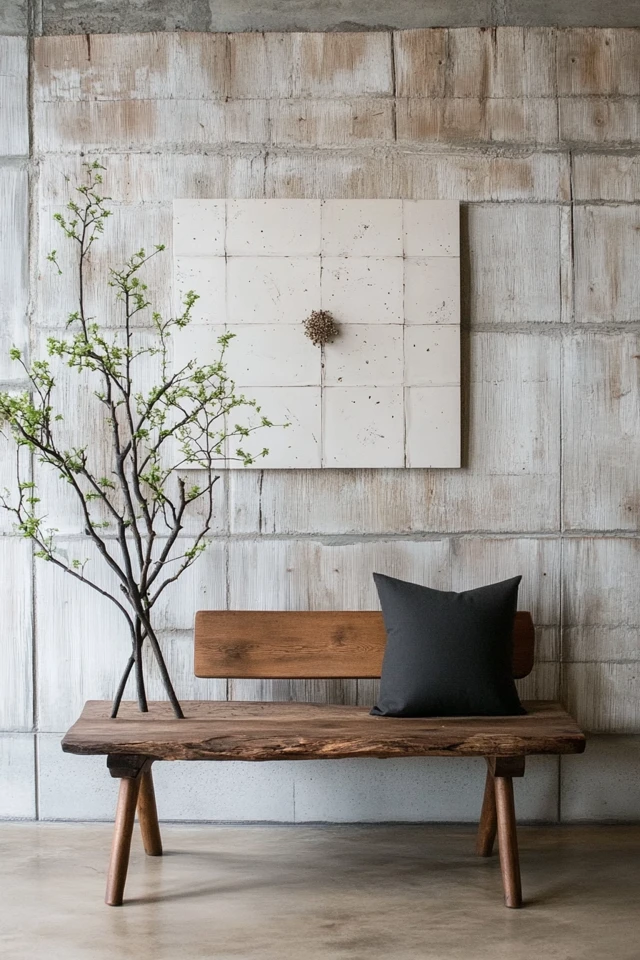
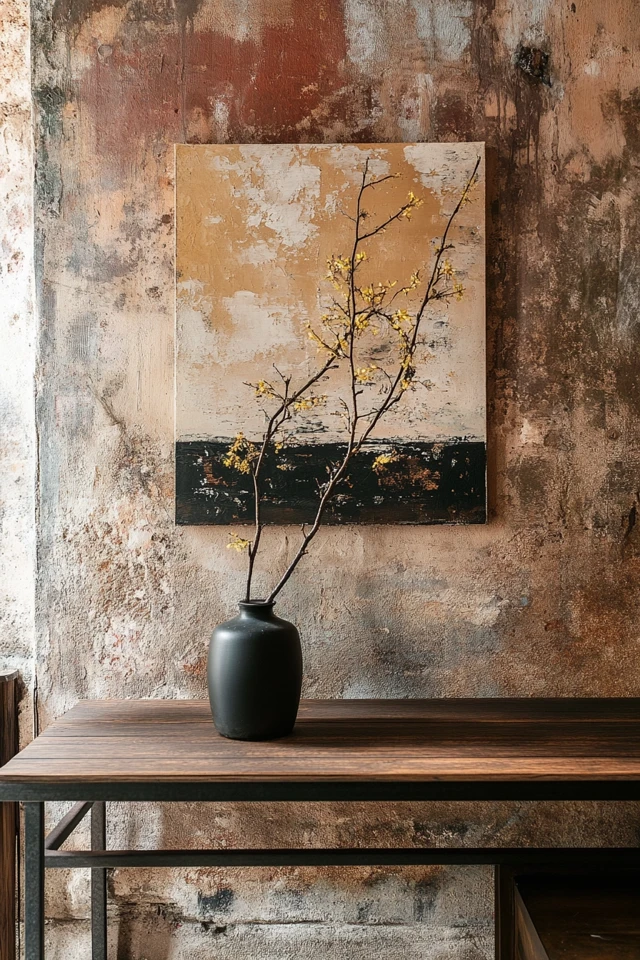
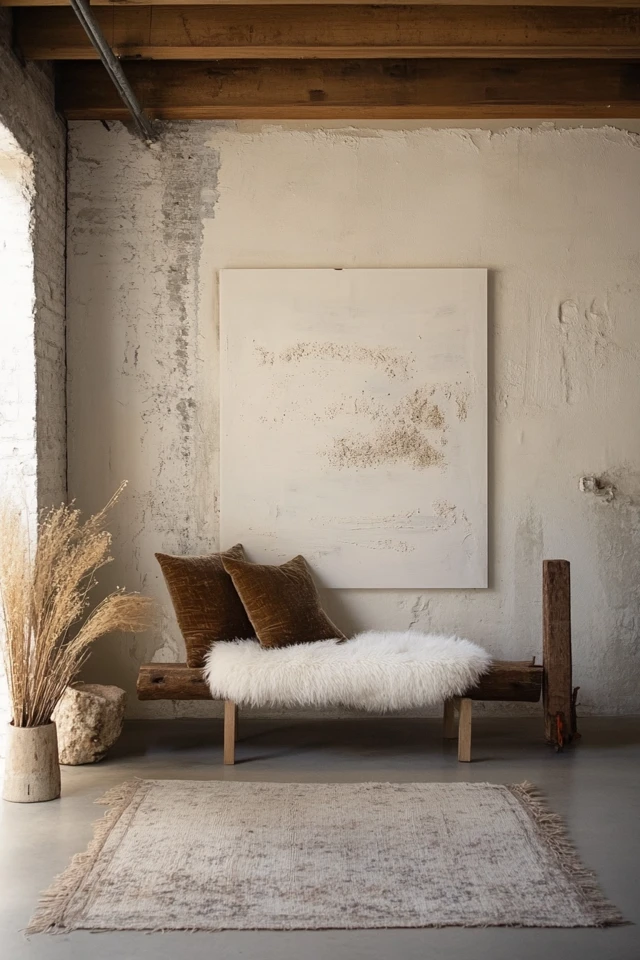
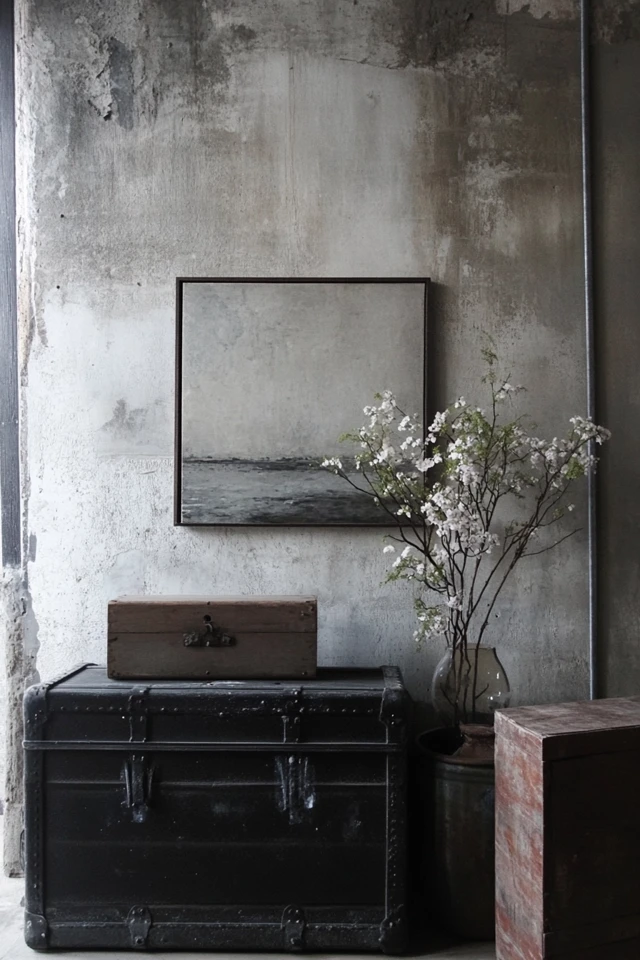
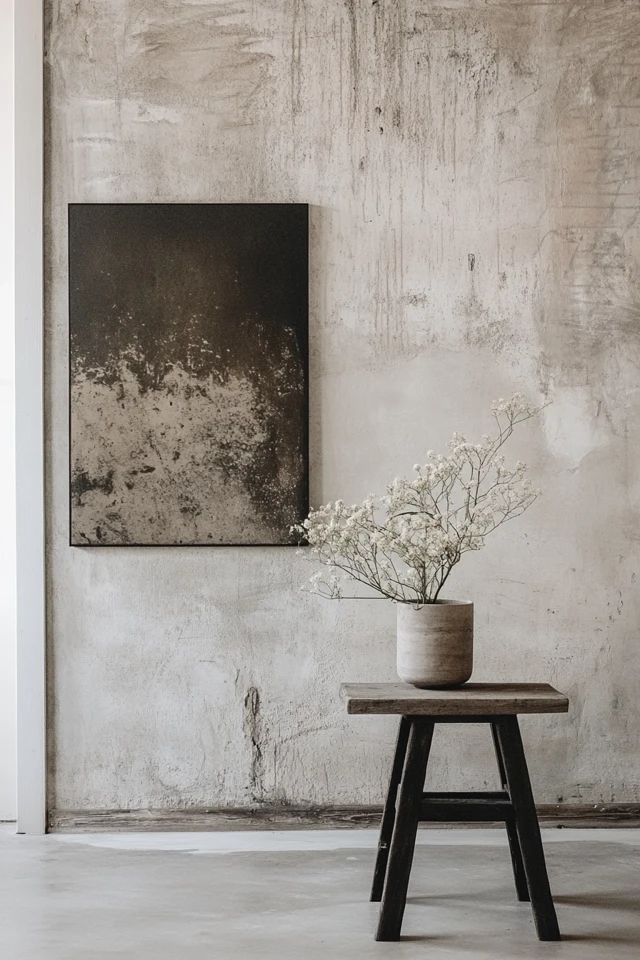
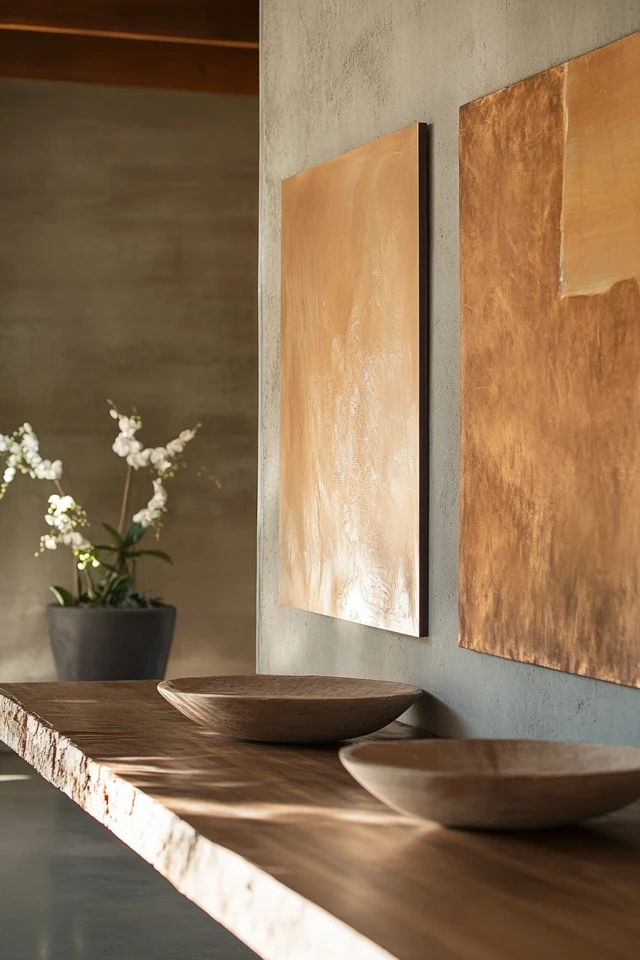

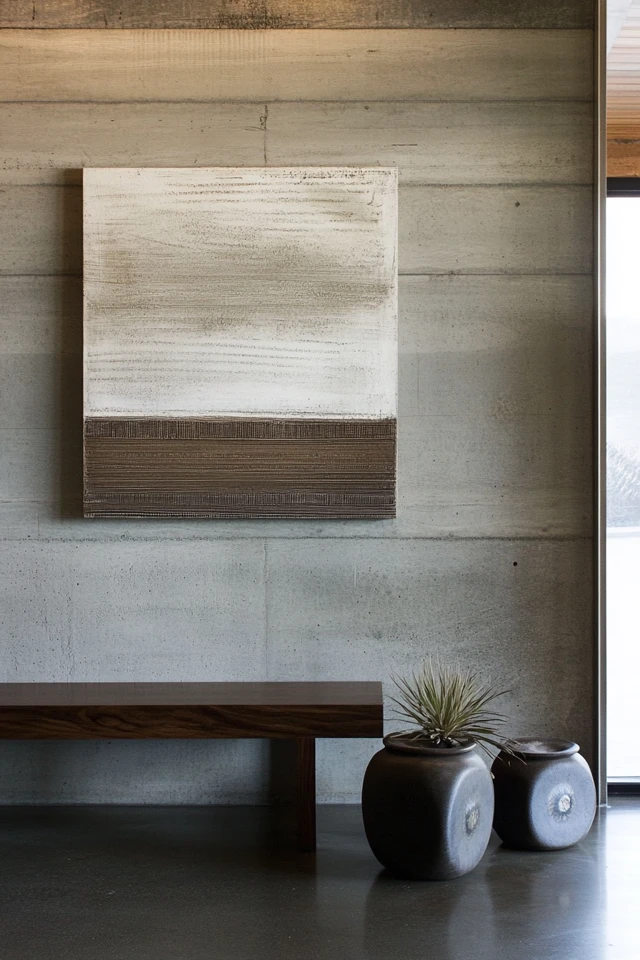
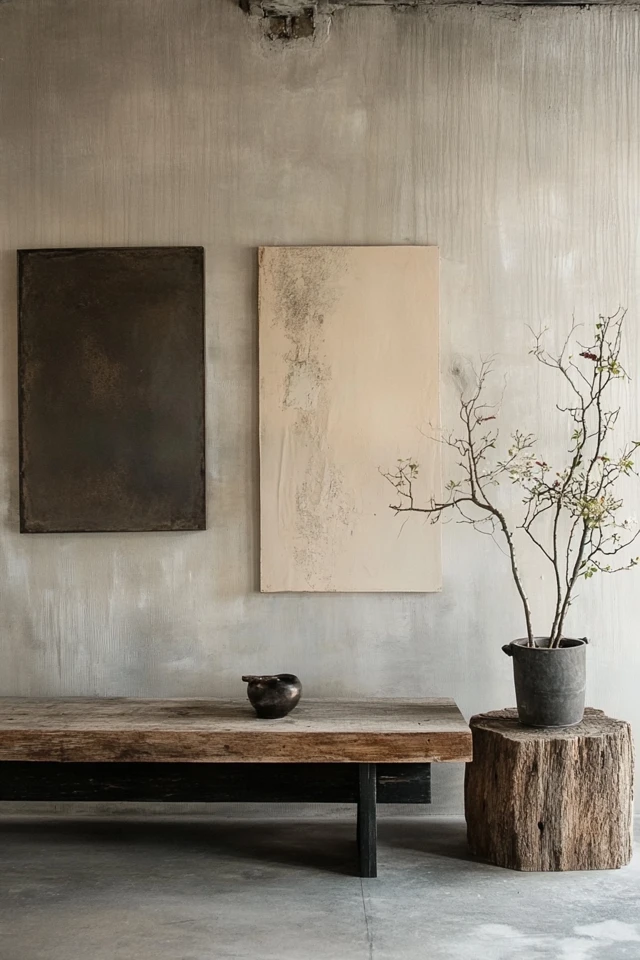
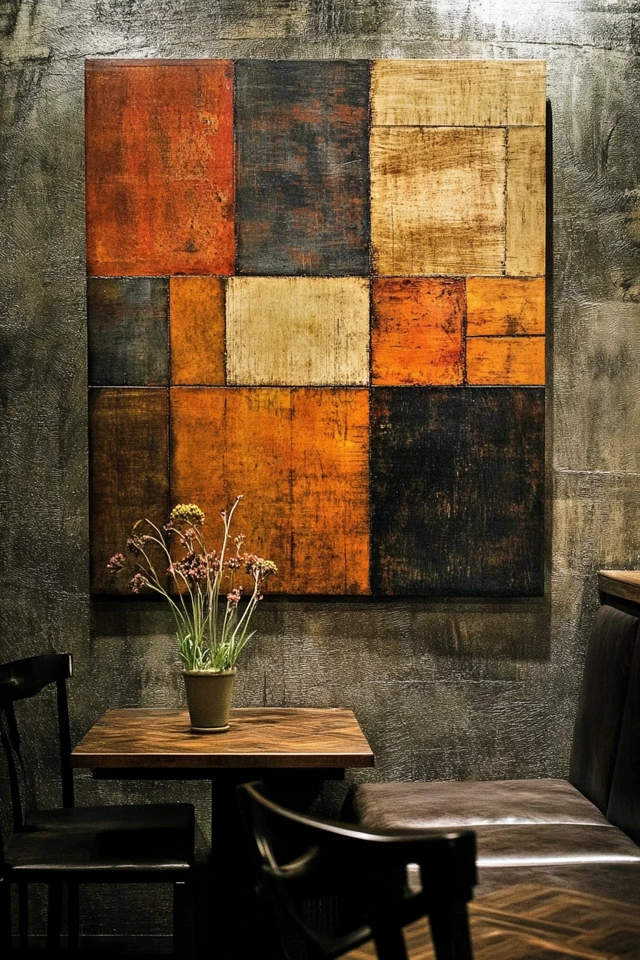
4. Framed Fabric or Textiles
Why It Works
Textured wall art like framed fabric or textiles adds subtle dimension to minimalist spaces.
How to Style It
- Choose simple fabrics like linen or raw cotton in neutral tones.
- Frame the fabric in thin black, white, or wooden frames for a polished look.
- Hang one or two large pieces for a modern, sculptural vibe.
Example:
A framed beige linen panel adds warmth and texture to a minimalist hallway.
5. Oversized Typography
Why It Works
Bold, minimalist typography is both modern and expressive.
How to Style It
- Opt for oversized letters or short phrases in sans-serif fonts.
- Stick to black, white, or gray prints for maximum impact.
- Center the piece above a console table or sofa for a statement.
Example:
A large-scale print that reads “Less is More” in black lettering on a white background emphasizes minimalist values in a living room.
6. Sculptural Wall Art
Why It Works
Three-dimensional wall art adds depth and intrigue to flat surfaces.
How to Style It
- Choose minimalist designs made from natural materials like wood, metal, or clay.
- Hang a single sculptural piece or arrange multiple small ones in a cluster.
- Let the texture and shape be the focal point—avoid bright colors or patterns.
Example:
A set of three white ceramic wall sculptures creates an organic, tactile element in a minimalist bedroom.
7. Grayscale Geometric Art
Why It Works
Geometric patterns in neutral tones add structure and modernity to minimalist spaces.
How to Style It
- Look for art with clean lines and subtle shading in black, white, or gray.
- Use square or rectangular frames for a harmonious look.
- Hang geometric art in office spaces or above sideboards for a contemporary touch.
Example:
A black-and-gray grid art piece enhances the modern feel of a minimalist home office.
8. Nature-Inspired Prints
Why It Works
Nature-inspired prints bring organic beauty and tranquility to minimalist interiors.
How to Style It
- Choose simple prints of leaves, trees, or landscapes in neutral tones.
- Pair with light wooden frames for an earthy, natural vibe.
- Hang nature-inspired art in bedrooms or bathrooms for a calming effect.
Example:
A soft illustration of a single eucalyptus branch framed in oak adds subtle charm to a minimalist guest bedroom.
9. Floating Frames
Why It Works
Floating frames give wall art a weightless, modern feel that’s perfect for minimalist designs.
How to Style It
- Use them to showcase botanical prints, abstract art, or line drawings.
- Hang one or two floating frames on a bare wall for a clean, uncluttered look.
- Choose clear acrylic or glass to maintain an open, airy vibe.
Example:
A black-and-white line drawing in a floating frame makes a striking centerpiece in a minimalist dining area.
10. Minimalist Gallery Walls
Why It Works
Gallery walls don’t have to be busy—minimalist versions focus on symmetry and cohesion.
How to Style It
- Use 4–6 evenly spaced frames in the same size and color.
- Stick to a unified theme, such as monochromatic photography or abstract sketches.
- Keep the spacing consistent and avoid overly intricate designs.
Example:
A grid-style gallery wall of black-and-white abstract prints adds an artful yet minimalist touch to a home office.
How to Maintain Minimalist Wall Art
- Stick to a Palette: Choose pieces in neutral tones or a limited color scheme.
- Focus on Balance: Leave plenty of negative space around art for an uncluttered look.
- Choose Quality Over Quantity: Invest in a few meaningful pieces rather than covering every wall.
- Reassess Regularly: Rotate or remove pieces that no longer feel essential to the space.
Conclusion
Minimalist wall art can transform a space, adding personality and sophistication without sacrificing simplicity. From large-scale abstract prints to sculptural wall pieces, the key is to choose art that feels intentional and cohesive with your overall design.
For me, incorporating minimalist wall art brought life and depth to my home without disrupting its calm, balanced aesthetic. Each piece felt like an extension of the space, enhancing its beauty while staying true to the minimalist philosophy.
So, experiment with these ideas and let your walls tell a story—one that’s as clean and intentional as the rest of your minimalist home.
FAQ
Can minimalist wall art be colorful?
Yes, but stick to muted or monochromatic tones to maintain a minimalist aesthetic. Soft pastels or earth tones work well for subtle pops of color.
What’s the best way to hang minimalist wall art?
Use clean, simple frames and leave plenty of negative space around the art for a balanced look.
How much wall art should I include in a minimalist space?
Less is more. Focus on one or two statement pieces or a small, cohesive gallery wall.
What materials work best for minimalist wall art?
Natural materials like wood, metal, and linen, as well as simple prints on matte paper or canvas, are ideal for minimalist wall art.
Where can I find minimalist wall art?
Look for minimalist art on platforms like Etsy, Society6, or local galleries. You can also create your own with simple line drawings or framed fabric.

